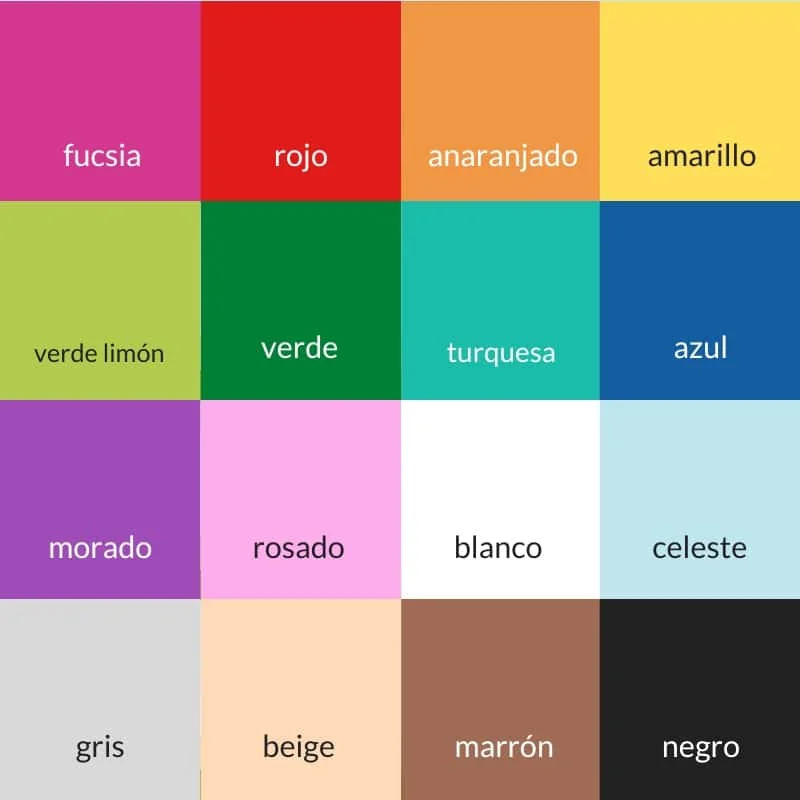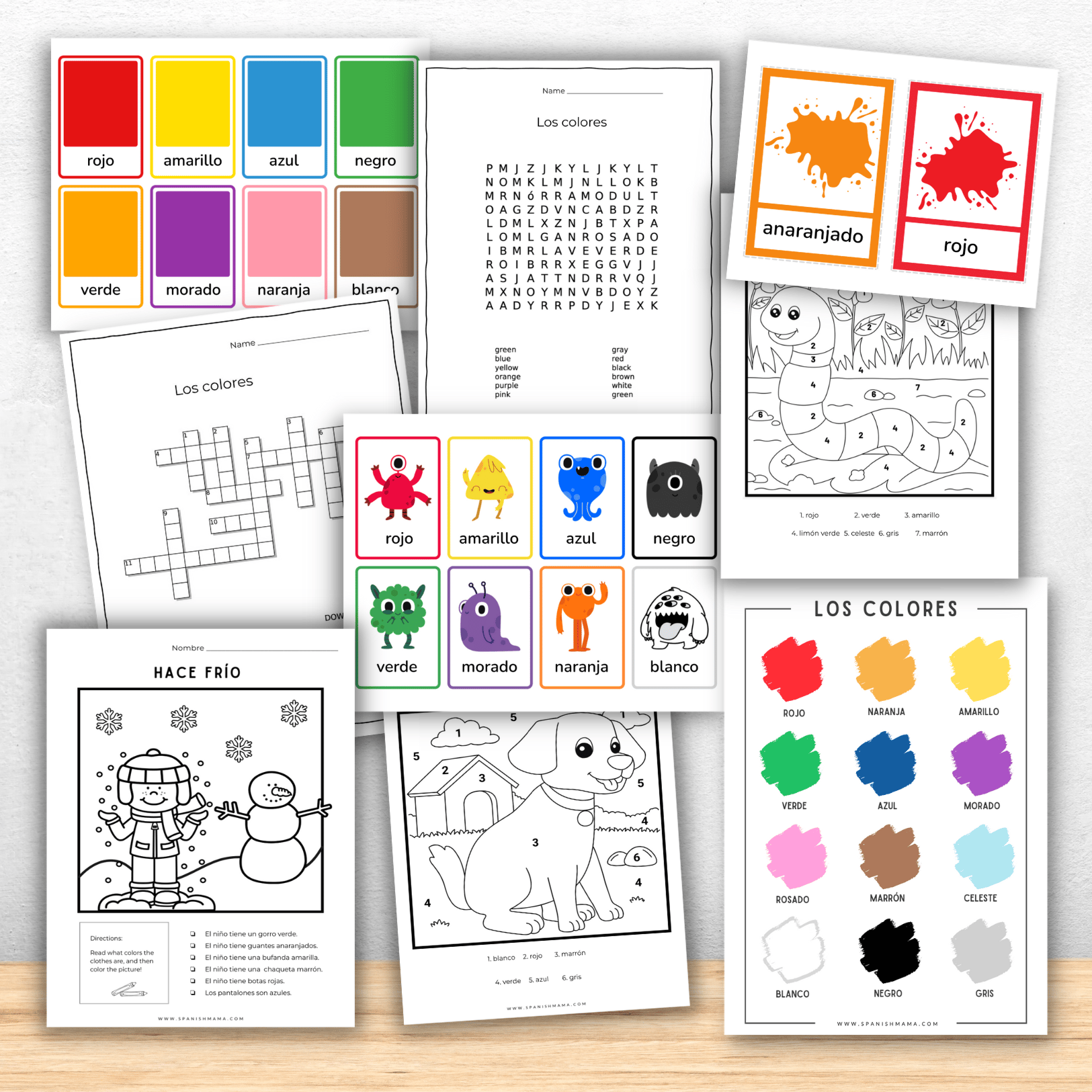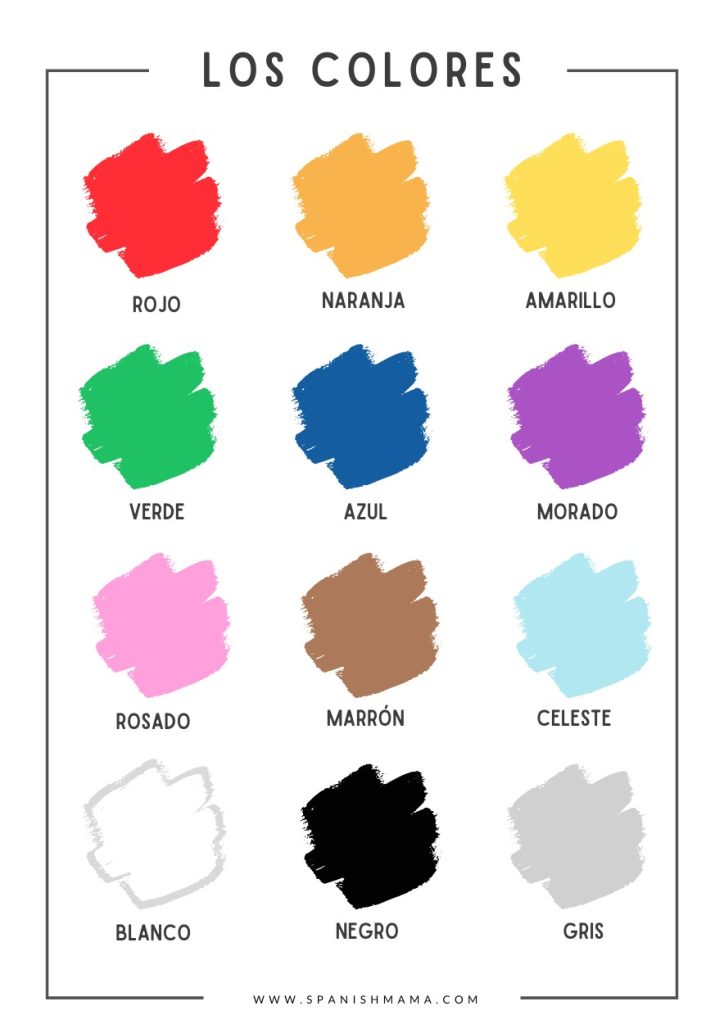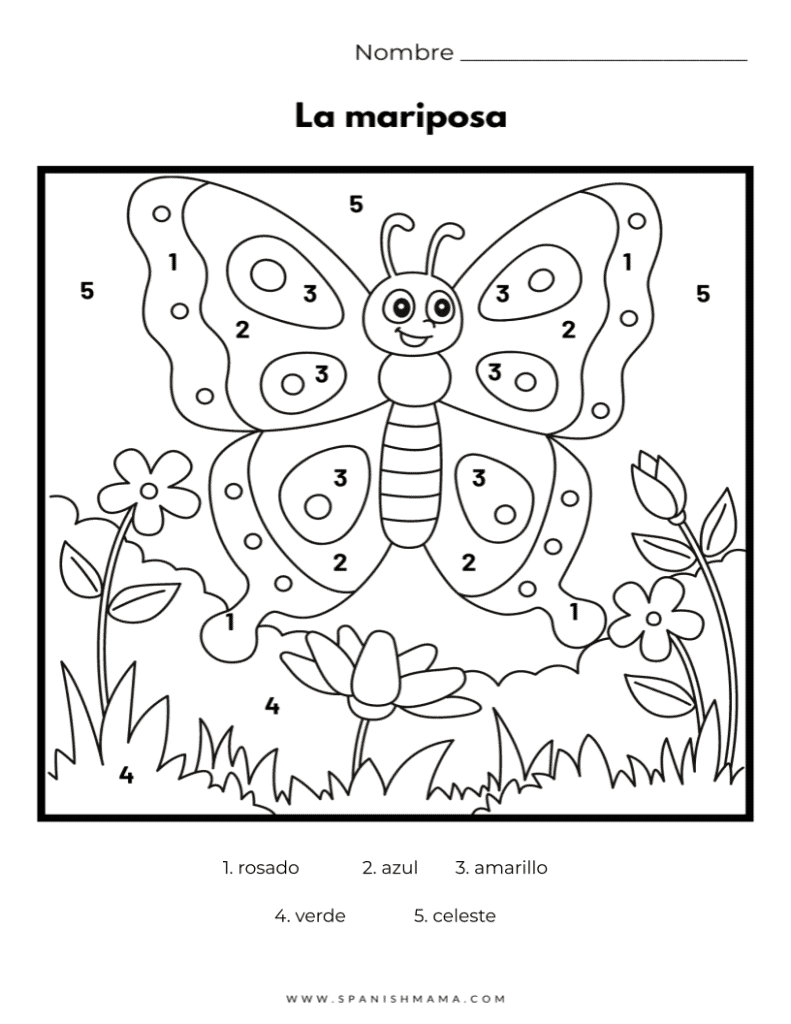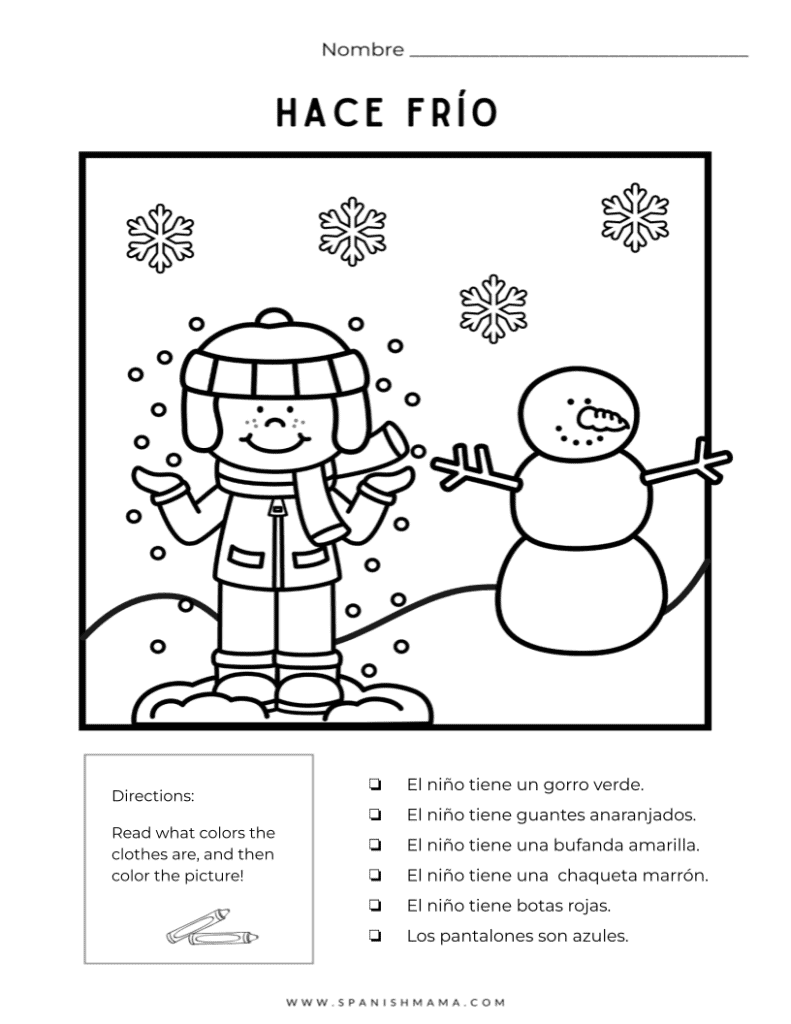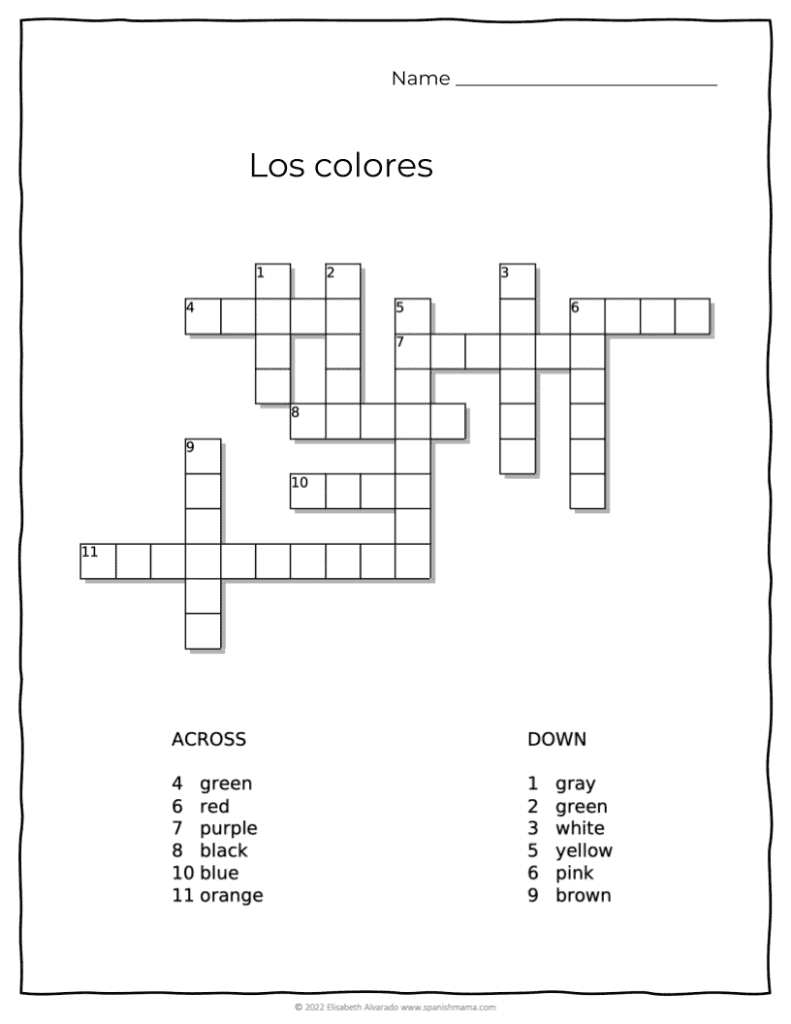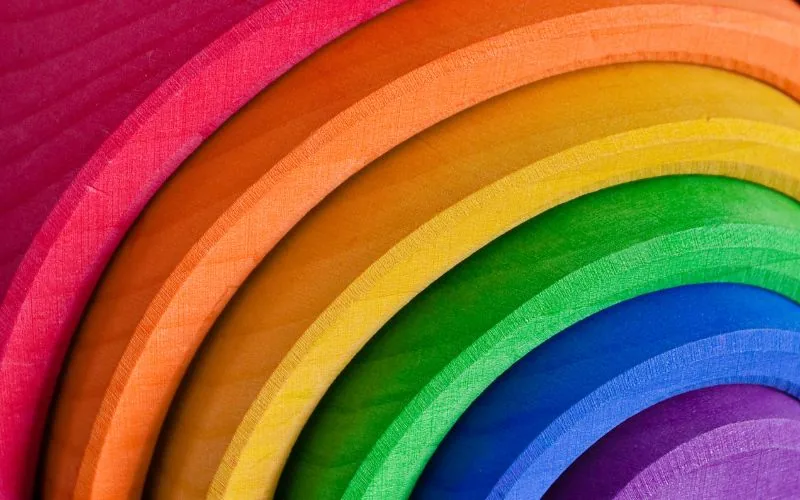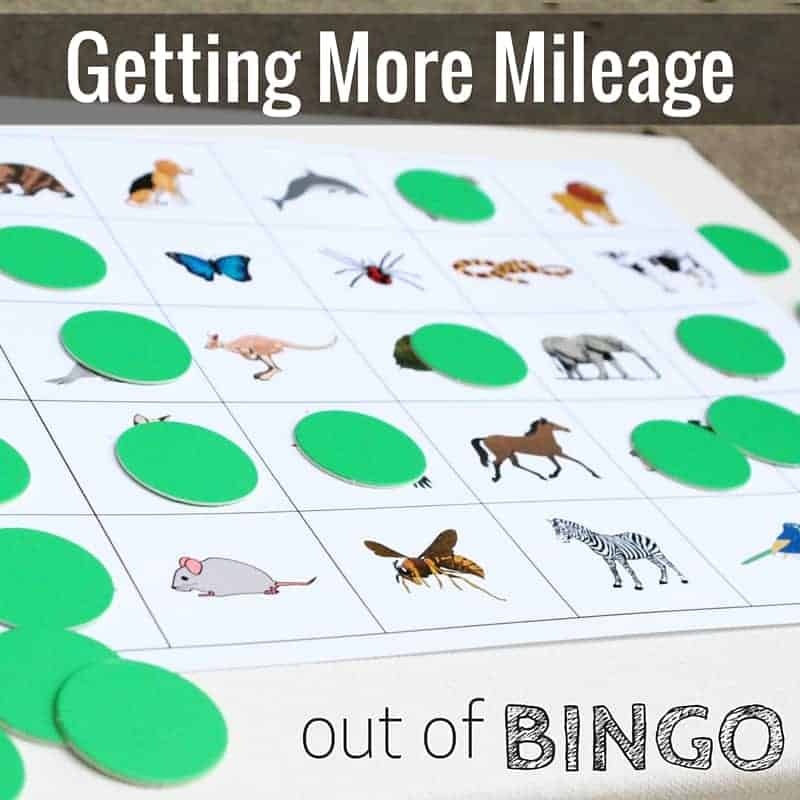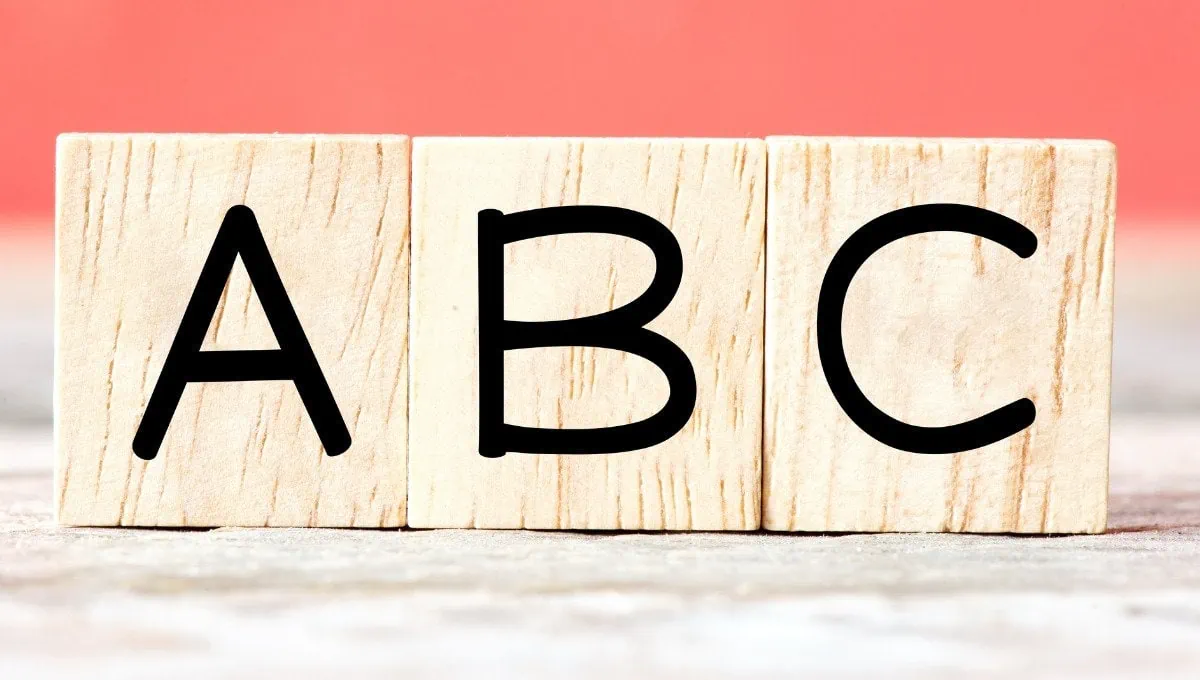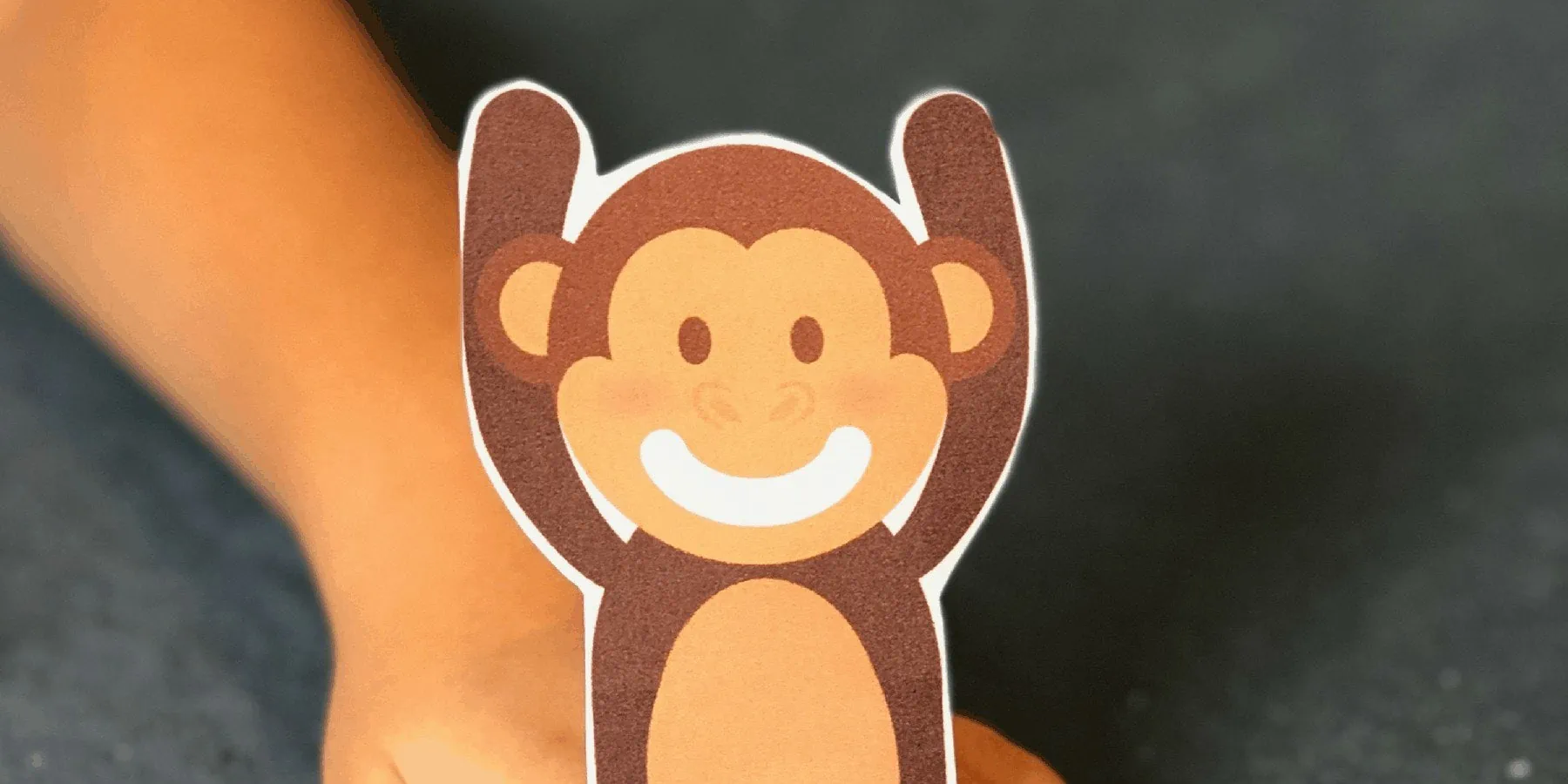The Colors in Spanish: Printable Worksheets and Posters
Inside: Learn the colors in Spanish with this guide and printable activities.
Los colores are often part of beginning Spanish vocabulary lessons.
When you are a beginner, adjectives can be a great way to describe something around you or something you need, even when you don’t know the precise term. Kids love working with colors as well!
Keep in mind that the terms can vary somewhat, depending on the region and the preferences of the speaker (native speaker or not).
Contents:
1. Colors in Spanish Vocabulary
2. Spanish Colors Worksheets
3. Example Sentences with Colors
4. Hair, Skin, and Eye Colors in Spanish
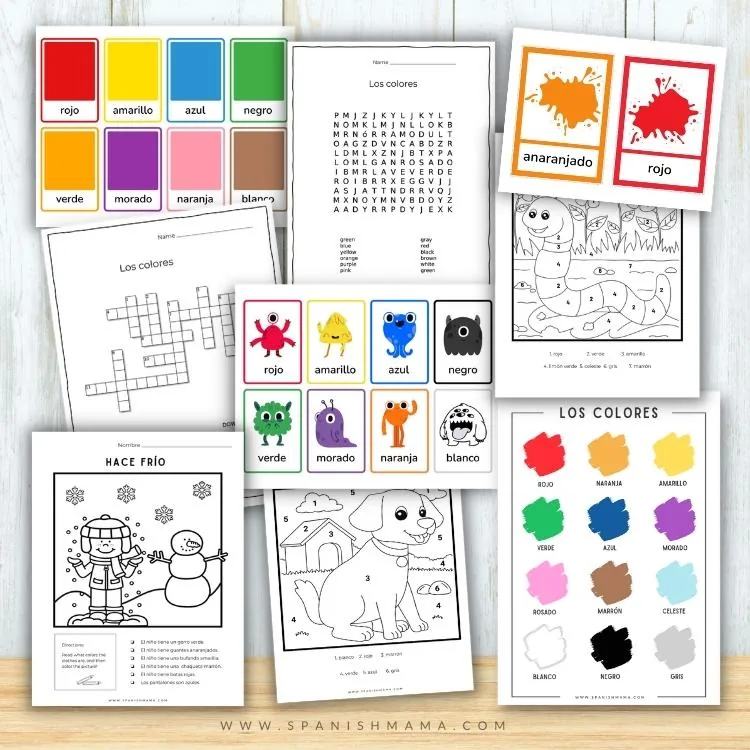
I have a pack of free Spanish colors posters, flashcards, color-by-numbers worksheet, and more printables you can get for free. Sign up to receive them email here or keep scrolling to see what’s included!
Related: Songs about the Spanish Colors
Primary Colors in Spanish
(Los colores primarios.)
rojo red
amarillo – yellow
verde – green
azul – blue
More Basic Spanish Colors
(Los colores secundarios.)
naranja / anaranjado – orange
morado / violeta / púrpura – purple
rosa / rosado – pink
marrón / café – brown
gris – gray
negro – black
blanco – white
You’ll notice that several colors have multiple options.
More Secondary Colors in Spanish
dorado – gold
fucsia – fuchsia
verde claro – light green
verde limón – lime green
lila – light purple
guinda – maroon
azul marino – navy blue
plateado – silver
oro – gold
celeste – sky blue
turquesa – turquoise
violeta – violet
beige – beige
Spanish Colors Worksheets
Common Beginner Sentences with Colors
Mi color favorito es ____________.
My favorite color is ______________.
Me gusta el color _______________.
I like the color ________________.
No me gusta el color _______________.
I don’t like the color ________________.
Using Colors as Adjectives in Spanish
Colors are adjectives. In Spanish, this means they usually go after the noun:
1. La camisa amarilla (The yellow shirt)
2. El libro azul (The blue book)
3. Las flores rosadas (The pink flowers)
The colors also change according to the gender and numbers of the things they are describing. Here are some examples!
The color red in Spanish is rojo. Let’s look at rojo with different objects and numbers of objects:
1. Quiero un suéter rojo. (I want a red sweater.)
It’s just one sweater, and suéter is masculine.
2. Quiero una chaqueta roja. (I want a red jacket.)
It’s just one jacket, but chaqueta is feminine, so rojo becomes roja.
3. Quiero dos suéters rojos. (I want two red sweaters.)
It’s multiple sweaters, so rojo becomes rojos.
4. Quiero dos chaquetas rojas. (I want two red jackets.)
It’s multiple jackets, so rojo becomes rojas.
The color green in Spanish is verde, which is a little different: it doesn’t end in an –o.
This means verde doesn’t change by the gender of the object, just the number. See these examples:
1. Quiero una manzana verde. (I want a green apple.)
2. Quiero dos manzanas verdes. (I want two green apples.)
Colors with Ser and Estar
Ser and estar both mean to be. When used with colors, ser refers to a permanent status and estar means it’s that color temporarily.
1. La mariposa es azul. (The butterfly is blue.)
2. El tomato esta´ verde. (The tomato is green/unripe.)
Colors for Hair and Skin in Spanish
Describing someone’s appearance in Spanish sometimes uses different vocabulary than just the regular color words (like English, where you say blonde instead of white or yellow for hair).
How to Describe Basic Hair Colors in Spanish:
Both pelo and cabello mean hair in Spanish.
cabello rubio – blonde hair
cabello negro – black hair
cabello castaño – brown/brunette hair
cabello rojo – red hair
pelirrojo – red haired
cabello canoso – gray hair
Other colors simply use the regular color vocabulary in Spanish (azul, rosado, etc.)
You might hear someone described as moreno as well. This can refer to dark hair or skin color: Ella es morena.
How to Describe Skin Colors in Spanish:
negro = black
moreno = brown
blanco = white
These colors can follow the word piel (skin) or ser (to be):
1. Ella tiene piel blanco. (She has white skin.)
2. Ella es blanca. (She is white.)
How to Describe Basic Eye Colors in Spanish:
ojos negros – black eyes
ojos cafés – brown eyes
ojos azules – blue eyes
ojos grises – gray eyes
ojos verdes – green eyes
ojos avellanas – hazel eyes

